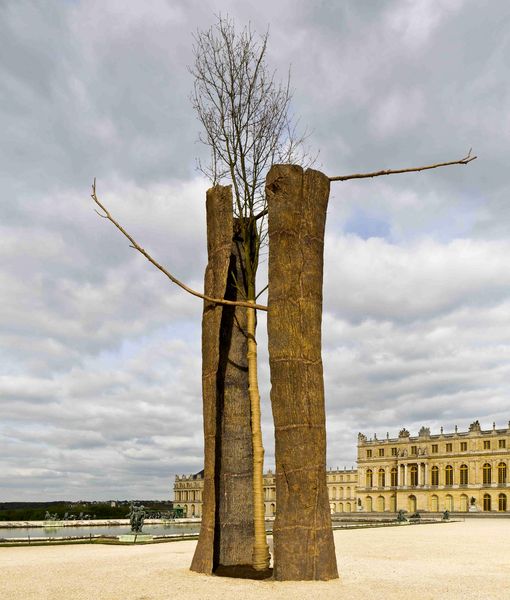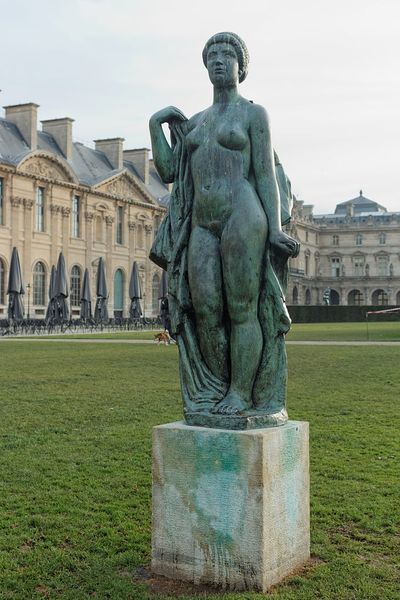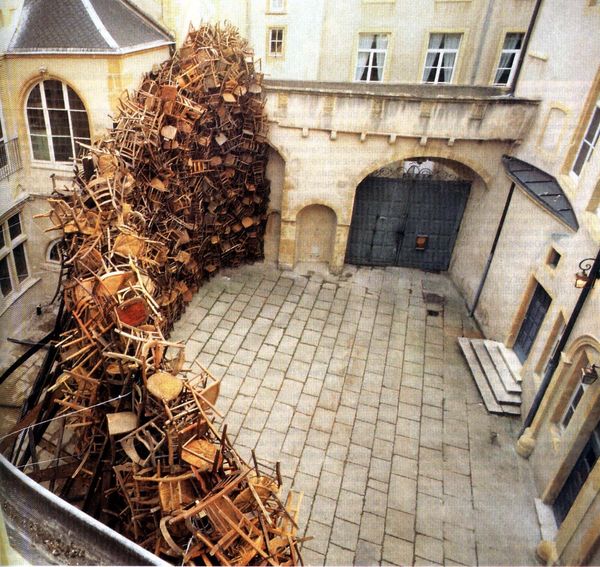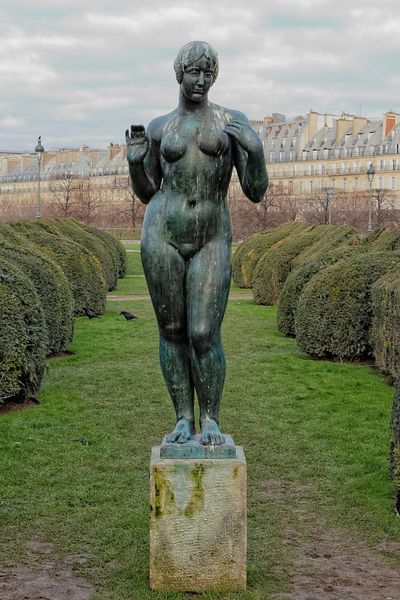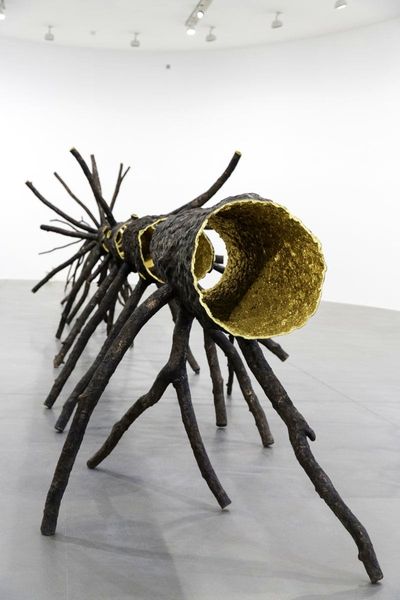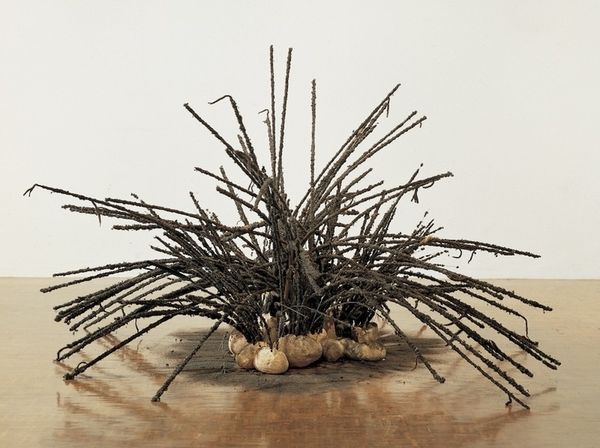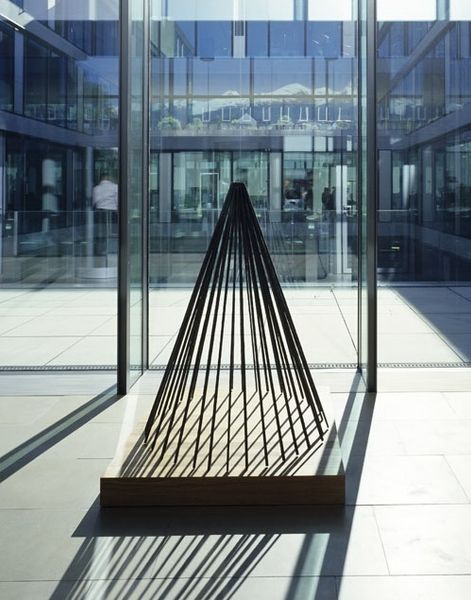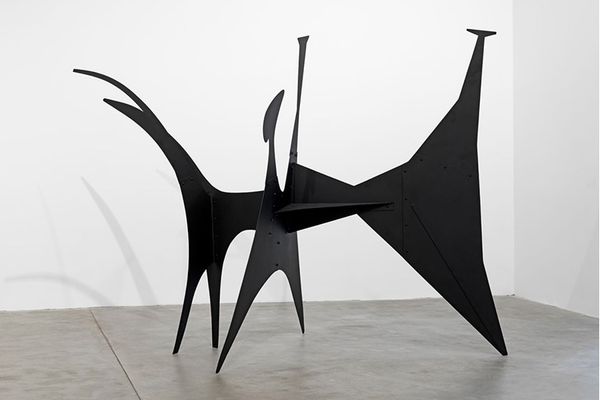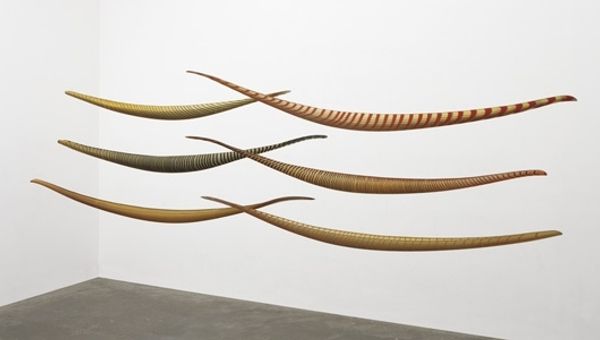
metal, bronze, public-art, sculpture, site-specific, installation-art
#
public art
#
contemporary
#
metal
#
sculpture
#
landscape
#
bronze
#
public-art
#
historic architecture
#
building art
#
geometric
#
sculpture
#
site-specific
#
installation-art
#
modernism
Copyright: © Giuseppe Penone
Curator: We're looking at "Spazio Di Luce," a sculpture by Giuseppe Penone, created in 2008. Editor: It resembles a giant, uprooted bush rendered in bronze. The cut ends of the branches… they lend a somewhat brutal, almost violent feeling against the formal backdrop of the palace. Curator: Penone often explores the relationship between nature and culture, placing his works in dialogue with historic architecture, as we see here at Versailles. These are metal branches arranged geometrically, seeking to connect natural forms with constructed space. This piece directly challenges the typical grandiosity of the formal garden. Editor: The craftsmanship is striking; you can see the traces of the casting process, giving the bronze a wonderful texture. But what's interesting is the way it mimics natural growth through a controlled, industrial process. It almost looks as if metal has been manipulated and assembled to appear organic. And then, positioned in opposition to the perfectly maintained architectural backdrop, it also questions the notion of material transformation through the lens of class and public presentation. Curator: It certainly disrupts traditional notions of sculpture and the use of outdoor space. This installation draws our attention to the artificiality inherent in formal landscapes, questioning how nature has been manicured and contained throughout history, particularly here at Versailles. Editor: Right. I find myself considering what labor was involved to produce this piece – the casting, the assembly. Metal, of course, comes from the earth, but the transformation requires human work that rarely registers in art history’s grand narratives. In this sense, Penone has brought into relief this labor by creating such a hyper-visible imposition into a hallowed historical space. Curator: Precisely, Giuseppe Penone's sculptures often offer viewers an intervention—inviting the public to reconsider art's role in shaping our understanding of history and landscape. Editor: It's a bold statement, creating tension, making you question both the sculpture's artifice and its setting’s cultivated artifice, reminding us that everything, even 'nature,' is a construct of material processes and societal control.
Comments
No comments
Be the first to comment and join the conversation on the ultimate creative platform.
